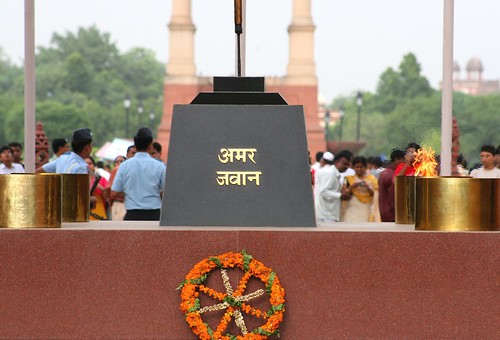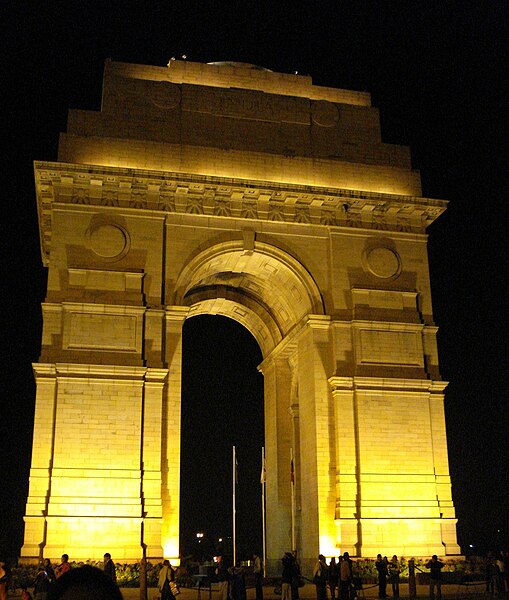Introduction

India Gate of Delhi is a 42 meter high gateway with an arch of 138 feet located at Rajpath, New Delhi.Amar Jawan Jyoti was added much later, after India got its independence. India Gate was designed by Sir Edwin Lutyens. Originally known as All India War Memorial, it is a prominent landmark in Delhi and commemorates the 90,000 soldiers of the British Indian Army who lost their lives while fighting for the British Indian Empire, or more correctly the British Empire in India British Raj in World War I and the Afghan Wars. It is composed of red sand stone and granite.
The India Gate permits the tourists to retrace the bravado of the Indian soldiers.India gate is a symbol of the bravery and valour of the soldiers.Every year on 26th January India gate stands witness to the Republic Day parade where latest advancements of defence technology is displayed. The parade is also a good platform to have a glimpse at the colourful and diverse cultural heritage of India as artists from all over the country perform on the occasion.
Amar Jawan Jyoti & its Significance

Burning in a shrine under the arch of India Gate since 1971 is the Amar Jawan Jyoti (the flame of the immortal warrior) which marks the Tomb of the Unknown Soldier. The shrine itself is a black marble cenotaph with a rifle placed on its barrel, crested by a soldier's helmet. Each face of the cenotaph has inscribed in gold the words "Amar Jawan"

History:-
The India gate was structured and designed by Edwin Lutyens in 1921. Situated on the Rajpath in New Delhi,The India Gate was originally called the All India War Memorial is a monument built by Sir Edwin Lutyens (who also designed the New Delhi city.) to commemorate the Indian soldiers who died in World War I and the Afghan Wars.The foundation stone was laid on 10 February 1921 by the Duke of Connaught. The names of the soldiers who died in these wars are inscribed on the walls.
The shrine is made up of a black marble and on the top of the shire there is a rifle with a soldier's cap on the top. This commemorative is placed on the structure having inscription of "Amar Jawan" on all the four sides.
A flame Amar Jawan Jyoti at India Gate kept alive since the place was built. India gate bears the names of Indian soldiers who gave there life for there country.It is in the form of a flame is burning day and night.
Night view of India Gate:

The night view of India Gate looks very majestic with children and families enjoying the evening. There is a lawn throughout the stretch of the Rajpath and people love coming here again and again. A summer evening is the best time to enjoy the surroundings of India Gate. During winters, lawns around India Gate and Rajpath are hot favorites for a picnic spot.

Special Event / Annual Event at India Gate:
Republic Day Parade.

Every year on 26th January, the President of India places a wreath at Amar Jawan Jyoti to pay his respects to the Indian armed forces. A grand parade then takes place along Rajpath. Marching contingents, tanks and weaponry, as well as colorful floats, folk dances and school children from different parts of India, take part in this resplendent ceremony that celebrate's India's Republic Day.

Swar Utsav: Organized by Delhi Tourism every October, the best Indian classical musicians perfom for music lovers, in the beautiful ambience of the India Gate lawns.
How to Reach:-
One can board DTC and private buses from any location within Delhi.
Buses to India Gate can be taken from the Inter State Bus Service or the ISBT.
By auto or cabs from anywhere in Delhi
There are frequent buses from Sarai Kale Khan Bus Terminal
One can find buses for India Gate at Connaught Place
Metro Rail Service can be used to reach India Gate. The nearest metro station to India Gate is Central Secretariat.


No comments:
Post a Comment